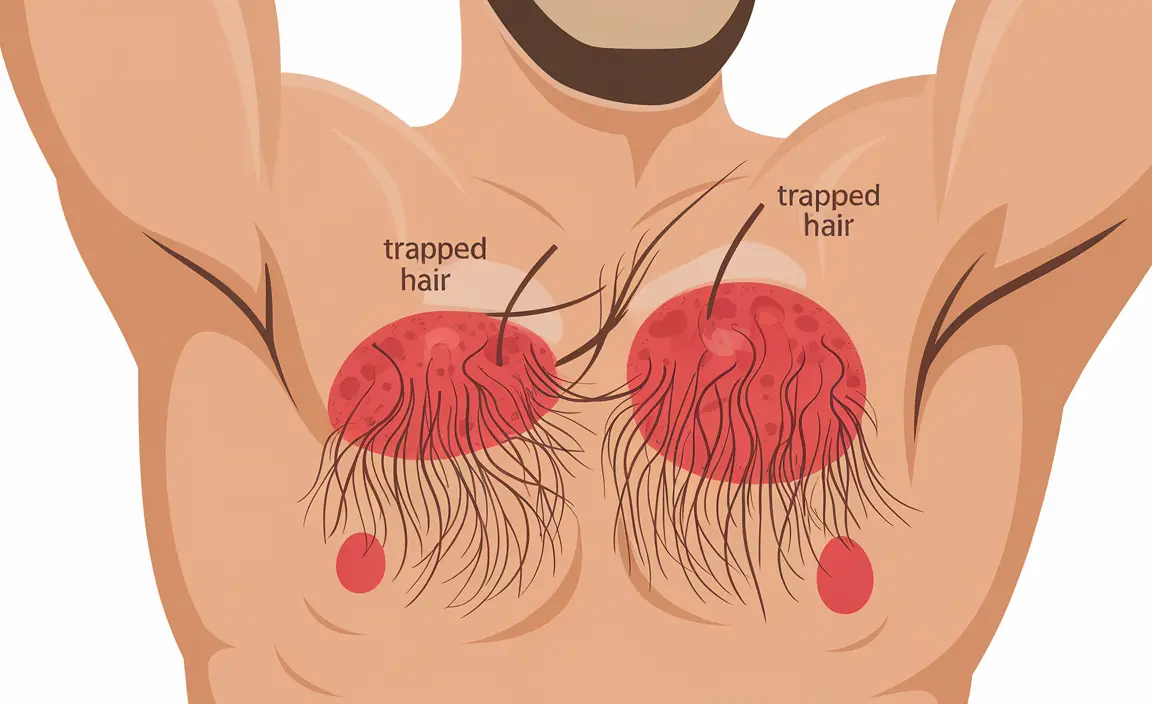Dealing with an ingrown hair in the armpit can be both uncomfortable and concerning. This common condition occurs when hair grows back into the skin instead of rising up from the follicle, often leading to irritation, discomfort, and sometimes infection. Understanding how to identify, treat, and prevent ingrown hairs in the armpit area is essential for maintaining healthy skin.
Whether you regularly remove armpit hair through shaving, waxing, or other methods, knowing how to handle and prevent ingrown hairs can help you avoid unnecessary discomfort and potential complications. Let's explore everything you need to know about managing this common skin concern.
Identifying Ingrown Hair in the Armpit
Recognizing an ingrown hair in the armpit is the first step toward proper treatment. Common signs include:
- Small, red bumps in the armpit area
- Tender or painful spots
- Visible hair trapped under the skin
- Itching or burning sensation
- Small fluid-filled blisters
- Darkened skin around the affected area
Understanding the Causes
Several factors can contribute to the development of ingrown hairs in the armpit region:
- Improper shaving techniques
- Tight clothing that causes friction
- Coarse or curly hair texture
- Dead skin cell buildup
- Aggressive hair removal methods
Risk Factors
Some individuals are more susceptible to developing ingrown hairs due to:
- Naturally curly or coarse hair texture
- Frequent hair removal
- Dry or sensitive skin
- Previous skin irritation or inflammation
- Certain genetic factors
Treatment Options
Most ingrown hairs in the armpit can be treated effectively at home using several methods:
Home Remedies
- Warm compresses to reduce inflammation
- Gentle exfoliation with a soft brush
- Over-the-counter hydrocortisone cream
- Tea tree oil applications
- Proper hygiene maintenance
Medical Treatments
For more severe cases, medical interventions might include:
- Prescribed topical antibiotics
- Retinoid creams
- Professional extraction
- Treatment for any resulting infection
Prevention Strategies
Taking proper precautions can significantly reduce your risk of developing ingrown hairs:
- Use sharp, clean razors
- Shave in the direction of hair growth
- Exfoliate regularly but gently
- Keep skin moisturized
- Consider alternative hair removal methods
- Use appropriate shaving products
When to Seek Medical Help
While most ingrown hairs resolve on their own, certain symptoms warrant medical attention:
- Signs of infection (increased redness, warmth, or swelling)
- Persistent pain or discomfort
- Formation of large or multiple cysts
- Fever or other systemic symptoms
- Recurring ingrown hairs despite prevention efforts
Frequently Asked Questions
What are the common signs and symptoms of an ingrown hair in the armpit? The most common signs include red, raised bumps, tenderness, itching, and visible trapped hair beneath the skin's surface. You might also notice small, fluid-filled blisters or darkened skin around the affected area.
How can I safely treat an ingrown hair in my armpit at home? Apply warm compresses several times daily, use gentle exfoliation, and keep the area clean. Over-the-counter treatments like hydrocortisone cream can help reduce inflammation. Avoid picking or forcefully removing the hair.
What causes ingrown hairs in the armpit, and why are some people more prone to them? Ingrown hairs typically occur when hair grows back into the skin instead of outward. People with curly, coarse hair are more prone to ingrown hairs, as are those who shave frequently or use improper hair removal techniques.
What are the best ways to prevent ingrown hairs in the armpit when shaving or removing hair? Use sharp, clean razors, shave in the direction of hair growth, exfoliate regularly, and keep skin moisturized. Consider using an electric trimmer or alternative hair removal methods if you're particularly prone to ingrown hairs.
When should I see a doctor for an ingrown hair in my armpit? Seek medical attention if you notice signs of infection (severe redness, swelling, or warmth), develop fever, experience severe pain, or if the ingrown hair doesn't improve with home treatment after several days.




